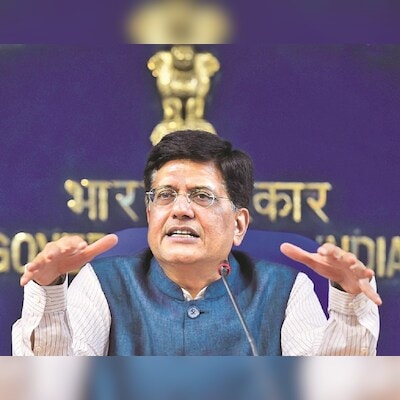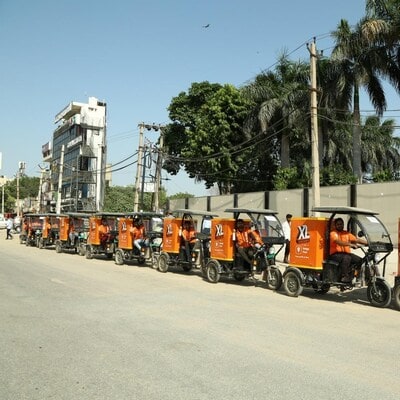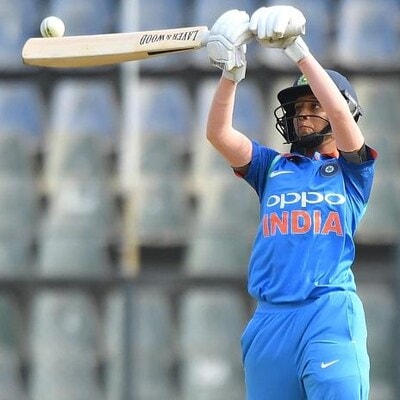)
Piyush Goyal, Union Minister of Commerce and Industry, Consumer Affairs, Food and Public Distribution, and Textiles
The 14 sectors covered under the production linked incentive (PLI) schemes have witnessed investments of Rs 1.46 trillion till August and the capital infusion is expected to reach Rs 2 trillion in the coming years, the commerce and industry ministry said on Sunday.
Commerce and Industry Minister Piyush Goyal has held detailed discussions with companies that are getting fiscal benefits under the schemes to seek inputs and feedback.
Click here to connect with us on WhatsApp
The minister engaged with 140 companies out of the 1,300 manufacturing units across 14 sectors, which have been the beneficiaries of the scheme.
“Overall achievement of PLI schemes was also discussed during the meeting. Actual investment of Rs 1.46 trillion has been realised (till August 2024) and is likely to reach Rs 2 trillion in the next year or so,” the ministry said in a statement.
This has resulted in production/sales worth Rs 12.50 trillion and employment generation of around 9.5 lakh (direct and indirect), which is expected to reach 12 lakh soon, it said.
Exports have exceeded Rs 4 trillion, with substantial contribution from key sectors such as electronics, pharmaceuticals and food processing, it added.
In the meeting, Goyal urged the Indian industry to focus on prioritising the production of high-quality goods to promote Brand India through sustainable practices.
He also called for focusing on increasing domestic value addition and extending support to domestic manufacturers in this regard.
During the three-hour interaction, CEOs of beneficiary companies shared their perspectives on the PLI schemes, and made suggestions for improving its effectiveness and streamlining implementation.
The minister stated that the government is committed to fast-tracking all the necessary approvals related to PLI industry and also providing handholding support in achieving greater market access.
Talking to media after the deliberations, the minister said it was an expectation that “we’ll see additional production of about Rs 11 trillion. But hearing some of the numbers today, my own sense is, both for domestic demand and for export, the production also will be much more than we had expected”.
The minister said that the units in these sectors are doing good and now they are in a position to invest, even without further support to the component manufacturing ecosystem, because demand has started getting generated.
In the meeting, firms gave their suggestions including those related to certain amendments in government procurement.
“Overall, the policy is the same, but there are certain sectors where the ecosystem takes time to develop, and initially the domestic value add is less. Gradually it goes up. That was a good suggestion, and I asked my officials to examine it whether we could have a roadmap for these sectors through which they can transition to become a class 1 or class 2 supplier,” Goyal said.
The prior experience requirement to participate in a government procurement for manufacturers who make some products for the first time in India or an innovative item may pose a challenge.
“Obviously, if they are making it for the first time in India, or there is an innovation which is happening for the first time in India, it is very difficult to have a prior experience,” he said, adding, “I have asked such sectors to get back to us with details so that we can take some technical expertise and its advice and see whether that same product can be through laboratory testing or other things can be made eligible to start supplying, being a new product or an innovative product without prior experience”.
The government has rolled out the scheme in 2021 for 14 sectors including electronics, pharmaceuticals, white goods, telecommunication and drones with an outlay of Rs 1.97 trillion. It aims to boost domestic manufacturing, attract investments and increase exports.
In the electronics sector, mobile phone manufacturing now accounts for half of India’s total output, with a “3x” increase in exports since 2020-21, the ministry said.
Further in the automobile sector, global champions have rolled out electric vehicles, with substantial investment in the country.
(Only the headline and picture of this report may have been reworked by the Business Standard staff; the rest of the content is auto-generated from a syndicated feed.)
First Published: Sep 29 2024 | 8:03 PM IST












Leave a Reply